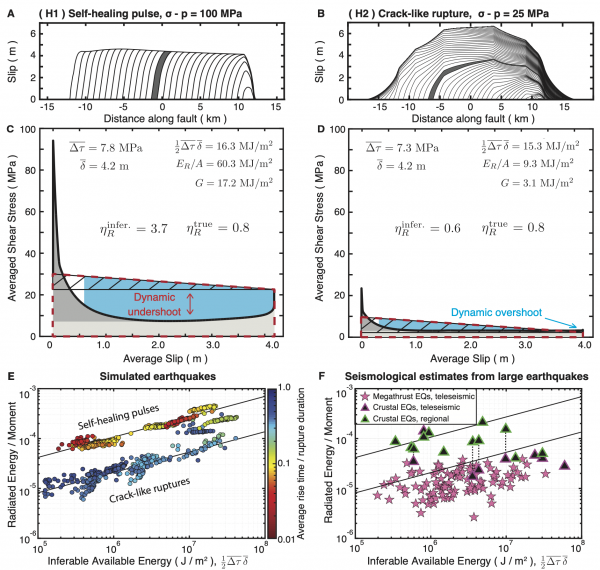Absolute stress levels on mature faults: Bridging insight from the lab and field using physics-based modeling
Valere Lambert

- Date & Time
- Location
- Online-only seminar via Microsoft Teams
- Host
- Jeff McGuire
- Summary
Determining principles and conditions governing motion along faults is crucial for assessing how earthquake ruptures start and how large they may ultimately become. One of the most notable constraints for the stress levels along mature plate boundary faults is the abundance of evidence that the resistance to shear motion during substantial fault slip must be low (< 20 MPa). Two end-member hypotheses are used to explain such low-stress operation of mature faults: either (I) mature faults are strong at slow, quasi-static sliding rates but undergo considerable enhanced dynamic weakening during rapid earthquake-producing slip rates, as widely observed in laboratory experiments; or (II) they are chronically weak, such as due to pervasive fluid overpressure. I will present recent progress exploring how the characteristics of different physical models for “weak” mature faults are reflected in a range of geophysical observations - including heat flow constraints, seismologically determined properties of earthquakes and earthquake frequency-magnitude statistics – using numerical simulations of earthquake rupture sequences with laboratory-derived fault friction laws, shear heating and effects of pore fluids. Our simulation results suggest that the two classes of fault models can, in principle, be distinguished based on the amount of seismic energy radiated from large earthquake ruptures, as well as earthquake frequency-magnitude statistics. Our findings taken with existing geophysical inferences suggest that persistently weak fault models with moderate enhanced dynamic weakening may be plausible representations of megathrust faults in natural subduction zones, with potential differences for some mature crustal strike-slip faults, or that existing estimates of seismically radiated energy are substantially underestimated. Our modeling results also highlight the potential scale dependence of average measures of shear stress and the importance of accounting for finite-fault effects, such as differences in how earthquake ruptures start and propagate, when relating local friction behavior determined in the lab to the field scale.
Closed captions are typically available a few days after the seminar. To turn them on, press the ‘CC’ button on the video player. For older seminars that don’t have closed captions, please email us, and we will do our best to accommodate your request.
 Jump to Navigation
Jump to Navigation